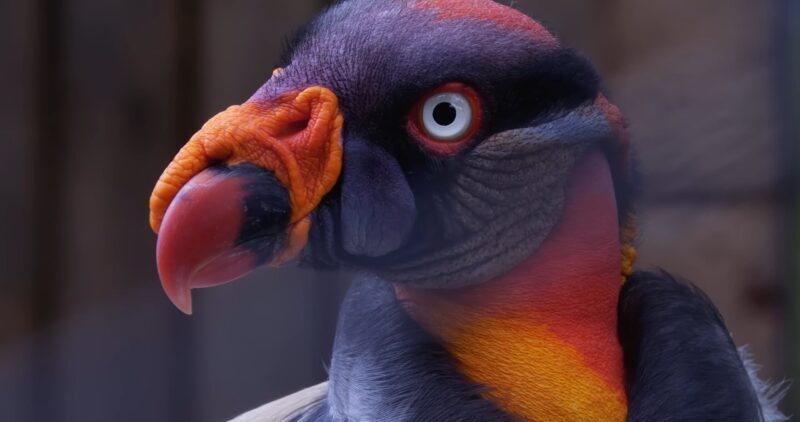The avian world is rich with variety, but some birds command special attention due to their size and grandeur.
In North America, the skies are graced by large raptors, waders, and other birds, each with its distinct traits.
From the iconic Bald Eagle, a symbol of the United States, to the elegant Great Egret, these birds are not just large in size but also significant in their ecological roles and cultural symbolism.
After walking you through some of the smallest species, today, we will explore the 18 largest birds of North America, discussing their unique characteristics and habitats.
| Bird Species | Key Features | Habitat |
| Red-tailed Hawk | Reddish-brown tail, versatile habitat | Deserts to woodlands |
| Great Horned Owl | Feather tufts resembling horns, adaptable | Arctic to tropics |
| Wild Turkey | Gobbling calls, capable flyers | Forested areas |
| Peregrine Falcon | Fastest animal on planet, urban dweller | Urban areas |
| Bald Eagle | National symbol of USA, near water bodies | Near water bodies |
| Canada Goose | Black head and neck, white chinstrap, ubiquitous | Lawns, parks, golf courses |
| American Crow | Intelligent, large vocabulary of calls | Various habitats |
| Osprey | Specialized fish-eating, unique talons and diving | Coastal areas, inland waters |
| Great Blue Heron | Tall, majestic, stalks prey in shallow waters | Rivers, lakes, wetlands |
| Cooper’s Hawk | Agile, preys in backyards and urban areas | Backyards, urban areas |
| Pileated Woodpecker | Distinctive appearance, prefers mature forests | Mature forests |
| Barred Owl | Distinct hooting calls, inquisitive nature | Dense forests, often near water |
| Turkey Vulture | Keen sense of smell, feeds on carrion | High in sky, near carrion |
| Common Raven | Intelligent, can mimic sounds | Various habitats |
| Northern Goshawk | Elusive, red eyes, prefers dense forests | Large, dense forests |
| Red-shouldered Hawk | Distinctive markings, woodland habitat | Wooded areas with open spaces |
| Tundra Swan | Long-term pair bonds, migrates from Arctic | Arctic, migratory |
| Great Egret | Long feathery plumes, wetland inhabitant | Wetlands, near water |
1. Red-tailed Hawks
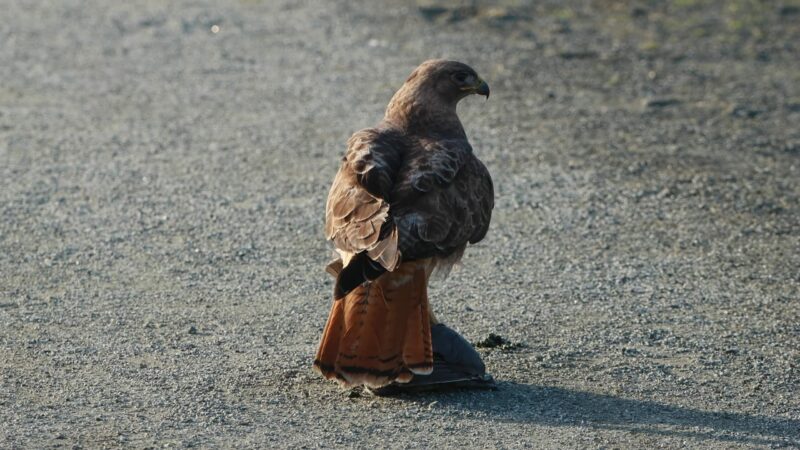
The Red-tailed Hawk is a common sight in North America, easily identified by its reddish-brown tail. These birds are adaptable and can be found in various environments, from deserts to woodlands.
Key Features
- Size: One of the larger raptor species in North America.
- Habitat: Versatile, inhabiting a wide range of environments.
- Behavior: Known for their soaring flight and piercing calls.
2. Great Horned Owls
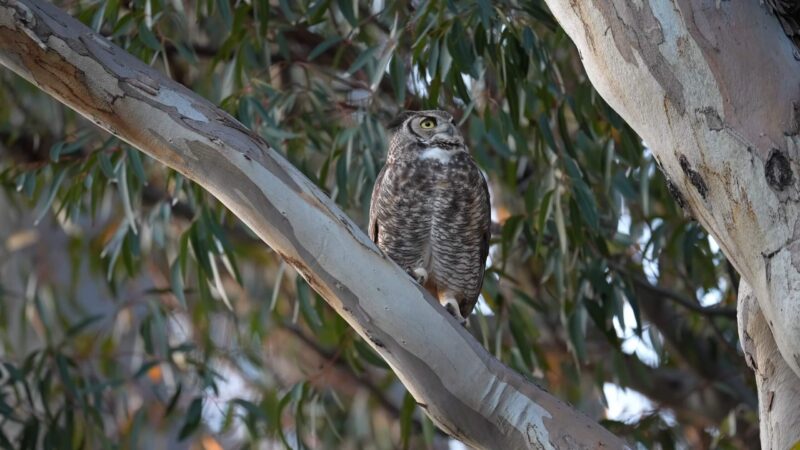
Great Horned Owls are notable for their adaptability, thriving in diverse habitats across North America. They possess distinctive tufts of feathers on their heads, resembling horns.
Significance
- Presence: Found from the Arctic to the tropics.
- Hunting Skills: Exceptional predators, often dominating their food chain.
3. Wild Turkeys
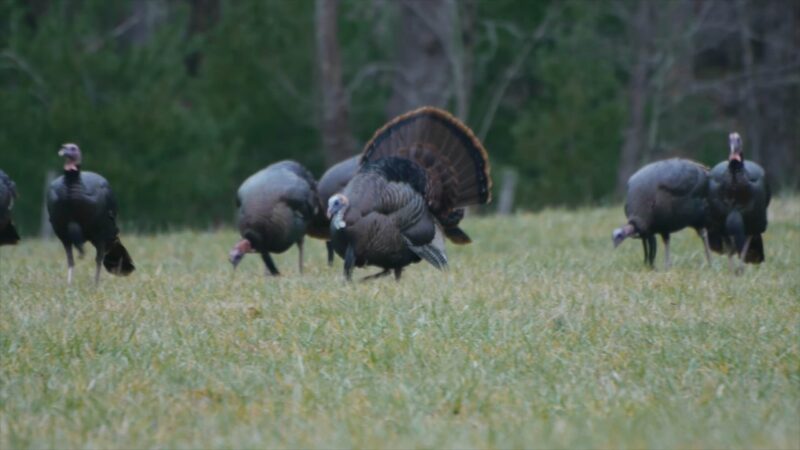
Wild Turkeys are large, ground-dwelling birds famous for their gobbling calls. Despite their size, they are capable flyers.
Importance
- Social Behavior: Known for their complex social structures and vocalizations.
- Habitat: Prefer forested areas but can adapt to various landscapes.
4. Peregrine Falcons

Peregrine Falcons, found in urban areas across North America, are renowned for being the fastest animals on the planet, reaching high speeds during their hunting dives.
Characteristics
- Hunting Technique: Specialize in high-speed aerial hunting.
- Adaptability: Thrive in urban environments, utilizing tall buildings as nesting sites.
5. Bald Eagles
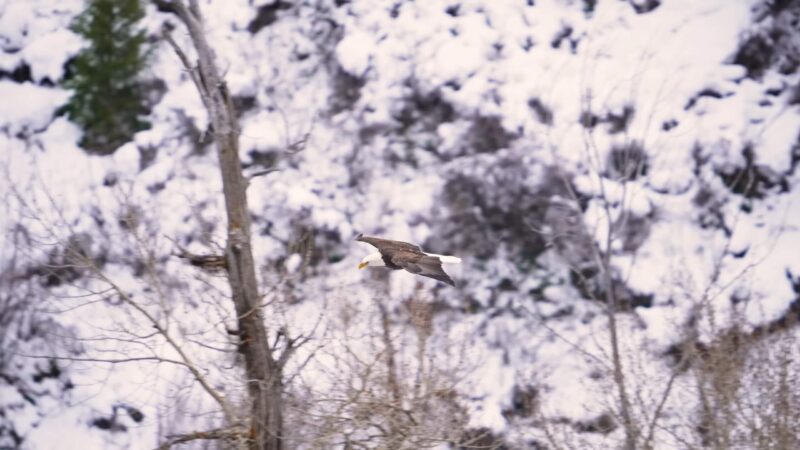
The Bald Eagle, the national symbol of the United States, is often seen around bodies of water. They are majestic birds with a powerful build and a keen eye for fish.
Habitat
- Preference for areas near water bodies.
- Nesting: Known for building large nests, often reused year after year.
6. Canada Geese
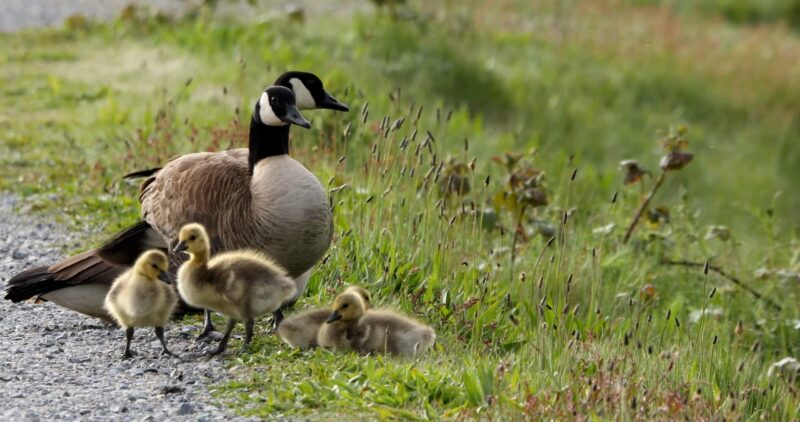
Canada Geese are abundant and easily recognizable by their black head and neck with a white chinstrap. They are often found in lawns, parks, and golf courses.
Behavior
- Migration: Notable for their V-formation during migration.
- Adaptability: Thrive in both wild and urban environments.
7. American Crows

American Crows are known for their intelligence and adaptability, inhabiting almost every habitat in North America. They have a large vocabulary of calls and a knack for problem-solving.
Key Traits
- Social Behavior: Often seen in large groups, known as ‘murders.’
- Diet: Omnivorous, feeding on a wide range of food items.
8. Ospreys
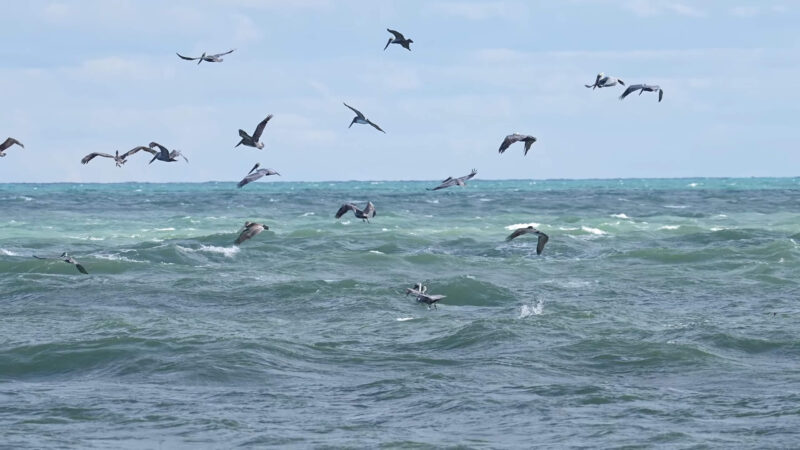
Ospreys are specialized fish-eating birds with unique talons and diving abilities. They are often seen hovering over the water before diving to catch fish.
Habitat
- Preference for coastal areas and inland water bodies.
- Nesting: Often build large nests on tall structures near water.
9. Great Blue Herons
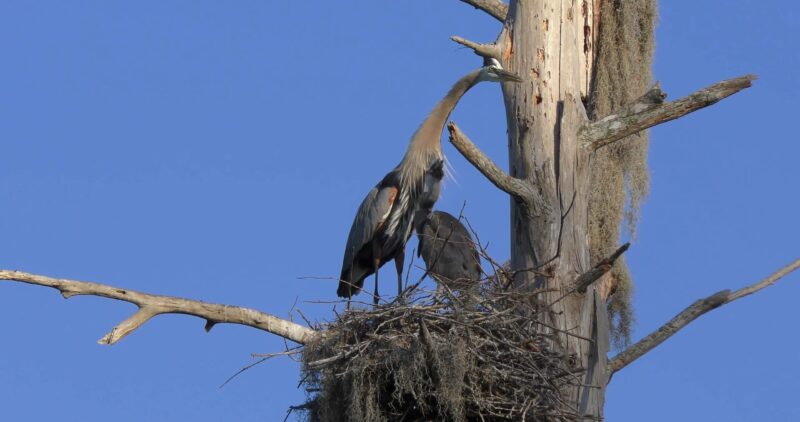
Great Blue Herons are tall, majestic birds commonly seen along the edges of rivers, lakes, and wetlands. They have a long neck and are excellent at stalking their prey in shallow waters.
Behavior
- Feeding: Skilled at catching fish and amphibians.
- Nesting: Often nest in colonies, high in trees near water.
10. Cooper’s Hawks
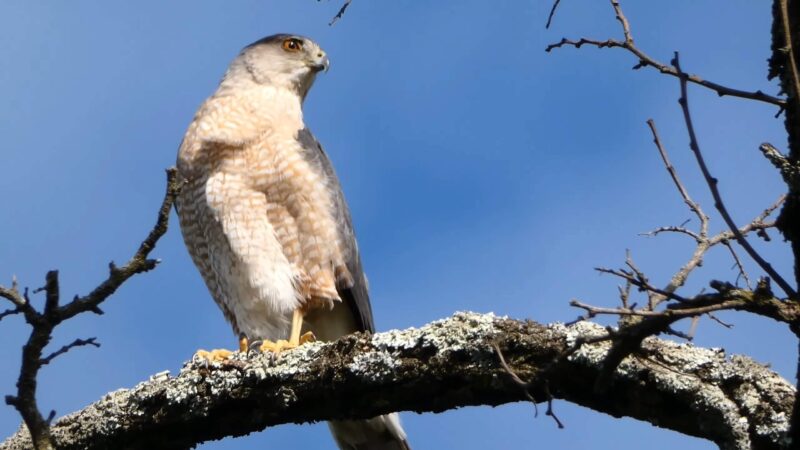
Cooper’s Hawks are agile raptors often seen in backyards and urban areas, preying on birds and small mammals. They are adept at maneuvering through dense foliage.
Key Features
- Hunting Skills: Known for their speed and agility in flight.
- Adaptation: Increasingly common in urban areas, adapting to human presence.
11. Pileated Woodpeckers

Pileated Woodpeckers are among the largest woodpeckers, known for their distinctive appearance and preference for mature forests. They create large, rectangular holes in trees while searching for insects.
Significance
- Role in Ecosystem: Help in forest regeneration by creating nesting sites for other species.
- Diet: Primarily feed on carpenter ants and wood-boring beetle larvae.
12. Barred Owls
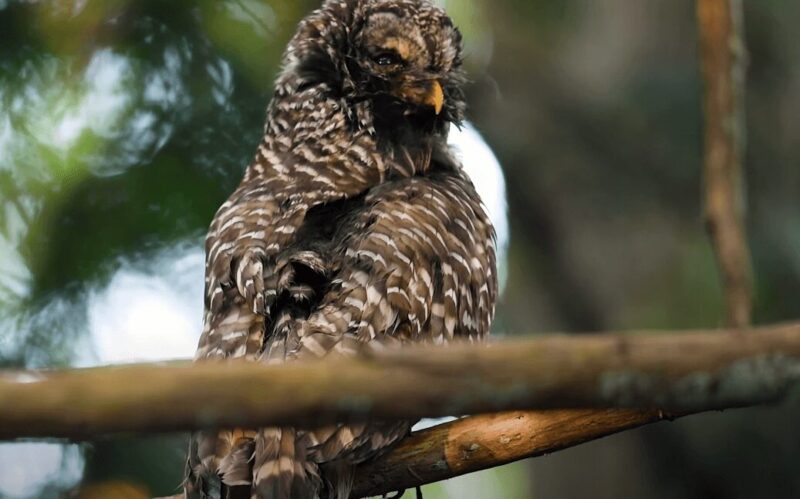
Barred Owls are common in North American woodlands, easily recognized by their distinctive hooting calls. These owls are known for their inquisitive nature and striking appearance.
Key Features
- Habitat: Prefer dense forests, often near water.
- Behavior: Active at night, known for their varied and distinct calls.
13. Turkey Vultures
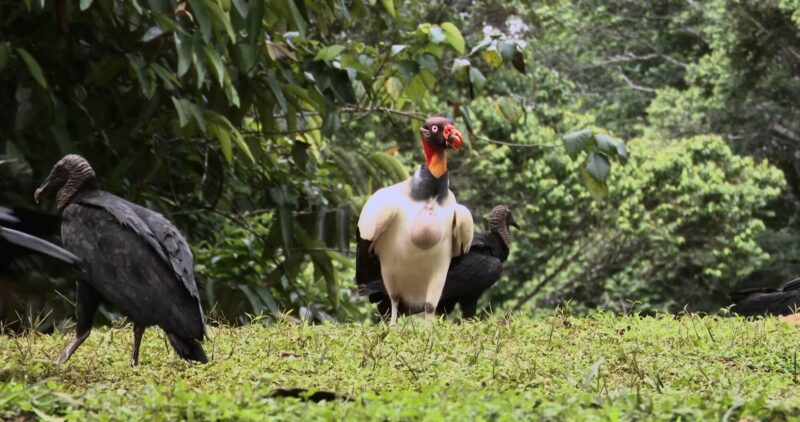
Turkey Vultures are unique among North American birds for their keen sense of smell, which they use to locate carrion. They have distinctive red head and are often seen soaring high in the sky.
Ecological Role
- Diet: Primarily feed on carrion, playing a crucial role in the ecosystem as scavengers.
- Flight: Utilize thermals for soaring and conserving energy while searching for food.
14. Common Ravens
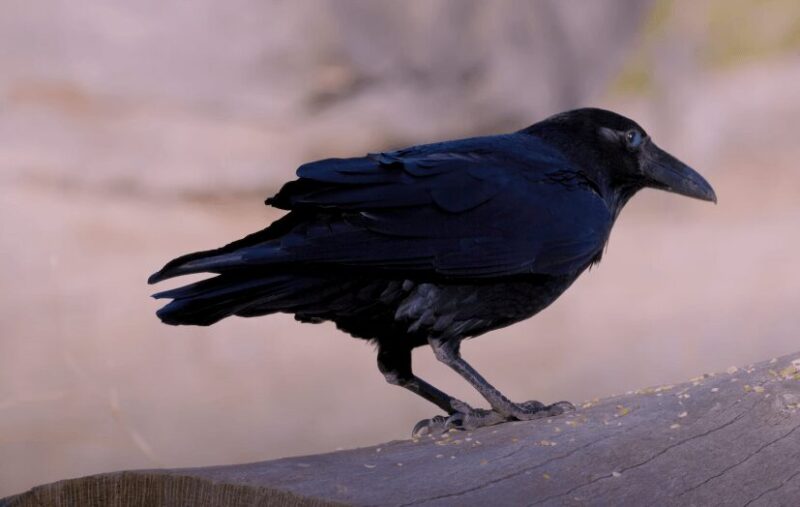
Common Ravens, known for their intelligence and adaptability, are found across various habitats in North America. They have a remarkable ability to mimic sounds and cooperate in obtaining food.
Behavior
- Social Dynamics: Often found in pairs or small groups.
- Communication: Known for their complex vocalizations and ability to mimic other sounds.
15. Northern Goshawks
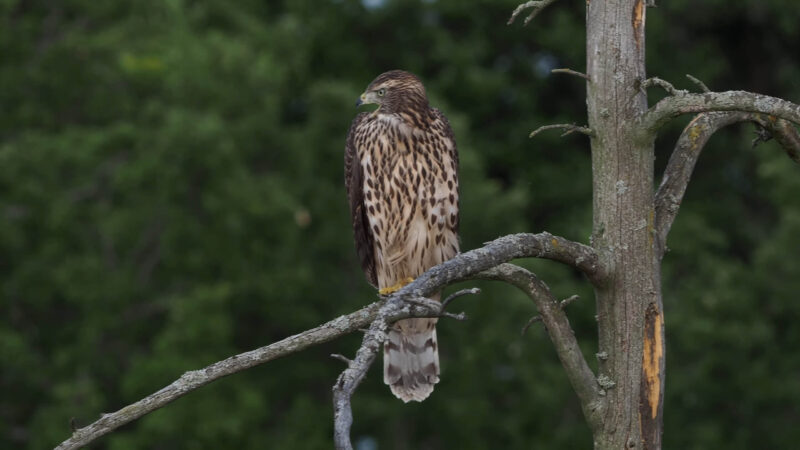
Northern Goshawks are elusive birds, preferring large, dense forests. They are distinguished by their striking red eyes and powerful build.
Hunting and Habitat
- Hunting Skills: Agile and powerful hunters, preying on birds and small mammals.
- Habitat: Prefer mature forests with thick canopy cover.
16. Red-shouldered Hawks
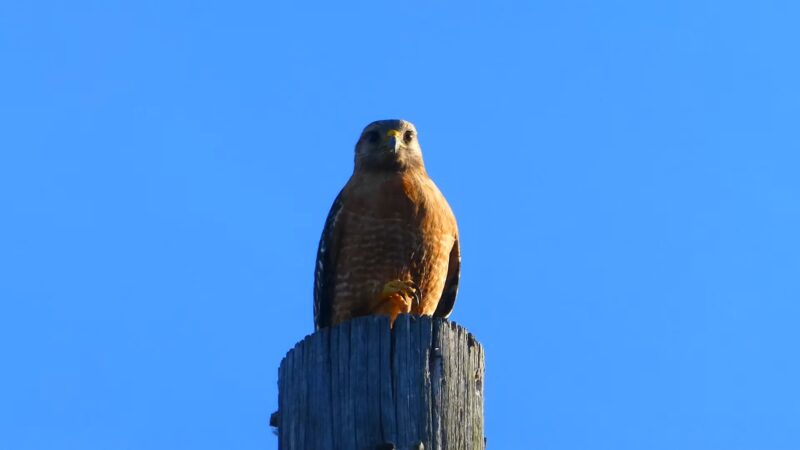
Red-shouldered Hawks are commonly seen in wooded areas across North America. They are known for their distinctive markings and vocalizations.
Key Traits
- Habitat: Prefer forested areas with nearby open spaces for hunting.
- Diet: Feed on small mammals, amphibians, and reptiles.
17. Tundra Swans
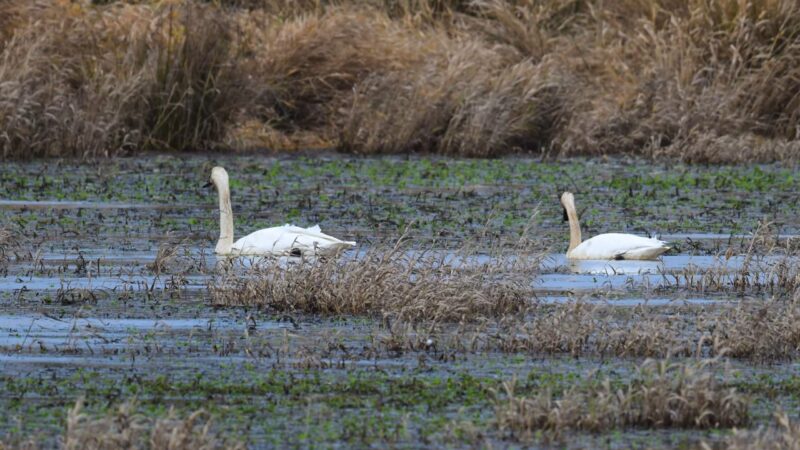
Tundra Swans, known for spending summers in the Arctic, migrate to North America during colder months. They are notable for their long-term bonds with their partners.
Migration and Behavior
- Migration: Undertake long migrations between breeding and wintering grounds.
- Social Behavior: Known for forming lifelong pair bonds and strong family units.
18. Great Egrets
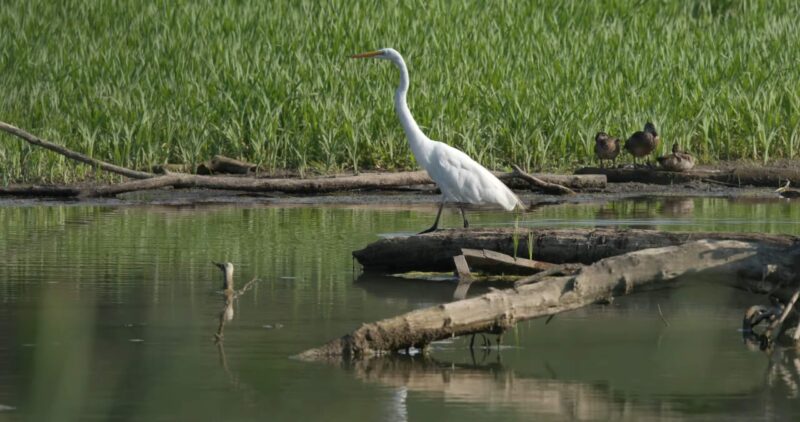
Great Egrets are stunning birds, especially noted for their long feathery plumes during the breeding season. They are commonly found in wetlands and along water bodies.
Habitat and Behavior
- Feeding: Expert fishers, often seen stalking their prey in shallow waters.
- Nesting: Build large nests in trees or shrubs near water.
Protecting Our Feathered Giants
The largest birds of North America not only captivate us with their majesty but also play vital roles in their ecosystems.
From the keen-eyed raptors to the graceful waders, each species contributes uniquely to the biodiversity and ecological balance of the continent.
As we continue to witness and enjoy their presence, it’s crucial to recognize the importance of conserving their habitats and ensuring a sustainable environment for these magnificent birds to thrive.
FAQs
Can the Great Horned Owl’s feather tufts be used to express its emotions?
No, the feather tufts of the Great Horned Owl are not used for expressing emotions. They are often mistaken for ears, but they are actually just feather tufts used for camouflage and display.
How long can a Bald Eagle live in the wild?
A Bald Eagle can live up to 20-30 years in the wild. In captivity, with the absence of natural threats, they can live even longer.
Do Peregrine Falcons mate for life?
Yes, Peregrine Falcons generally mate for life. They are known to return to the same nesting site each year with their partner.
What is the primary diet of an American Crow?
American Crows have a diverse diet that includes insects, seeds, fruits, small animals, and carrion. They are opportunistic feeders and will eat almost anything edible.
Are Ospreys affected by pesticides like DDT, similar to Bald Eagles?
Yes, Ospreys were significantly affected by the use of DDT and other pesticides, which caused their eggshells to thin and break easily. However, their populations have recovered well since the ban of DDT.
What is the wingspan of a Great Blue Heron?
The wingspan of a Great Blue Heron typically ranges between 5.5 to 6.6 feet (1.7 to 2 meters), making it one of the largest birds in its habitat.
Final Words
The largest birds of North America, from the soaring Red-tailed Hawk to the elegant Great Blue Heron, play crucial roles in their ecosystems.
They captivate us with their size, beauty, and behaviors, reminding us of the richness and diversity of North American wildlife.
Protecting these magnificent birds and their habitats is essential for maintaining the ecological balance and the natural heritage of the continent.
Related Posts:
- 11 Largest Whales of North America: Unveiling the…
- 10 of the Largest Animals In North America - Nature's Giants
- 10 Most Dangerous Birds Of North America - Predators…
- Are Porcupines Deadly? - Are They Harmful to Humans…
- How Well Does a Rabbit See? - What Colors, Shapes,…
- 10 Slowest Animals in North America - Slow and Steady


